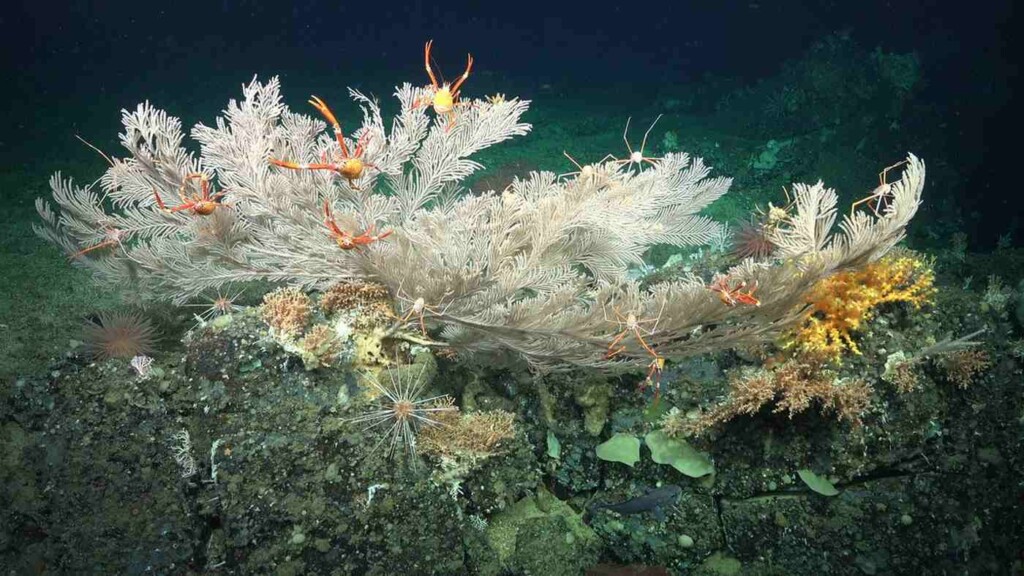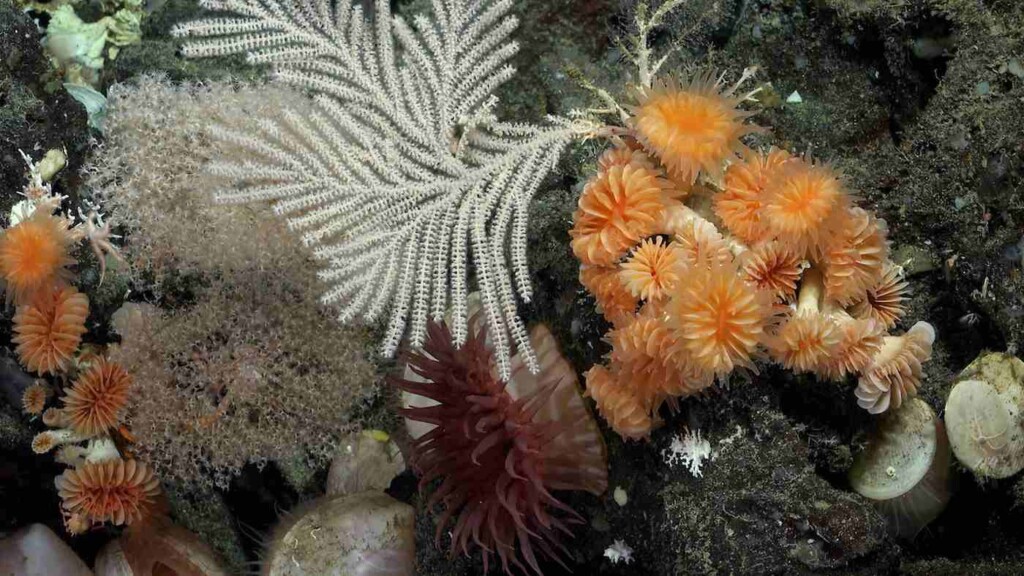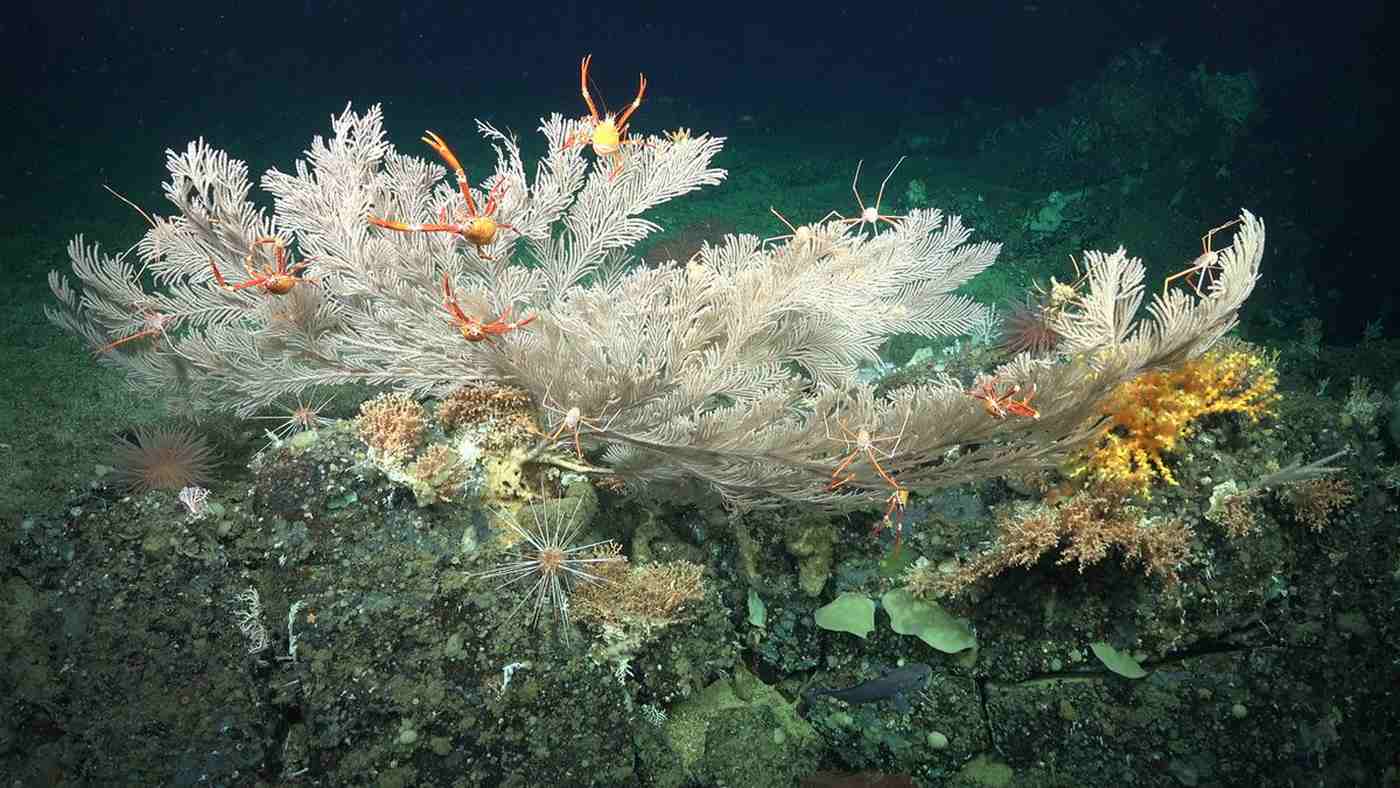
Everyone knows of the Galapagos Islands’ biodiversity and scientific value on land, but a recent deep-water expedition has revealed that this biodiversity carries on fathoms below the bellies of the islands’ giant tortoises.
An international expedition from the Schmidt Ocean Institute has revealed the presence of two pristine, cold-water coral reefs growing alongside the walls and bases of several seamounts over 1,000 feet below the surface.
Tropical coral reefs typically grow within 120 feet of the surface, but have sometimes been found at lower depths. These however were cold-water corals, known sometimes by their shorthand of “stony corals,” and were found at depths ranging from 1,200 to 1,375 feet (370 to 420 meters).
The larger of the two reefs spans over 800 meters in length, the equivalent of eight football fields. The second, smaller reef measures 250 meters in length. They exhibit a rich diversity of stony coral species, suggesting that they have likely been forming and supporting marine biodiversity for thousands of years.
The inhabitants of these reefs included sea fans, or Gorgoans, and stony corals from the subclass Hexacorallia, or six-sided corals, which include almost only deep-sea corals but also sea anemones.
These are the second and third deep-sea coral reefs found in the Galapagos Island Marine Reserve, following the discovery of the first one this April by scientists onboard a research vessel from the Woods Hole Oceanographic Institution.
The Schmidt expedition began in September and was led by Dr. Katleen Robert of the Fisheries and Marine Institute of Memorial University of Newfoundland and Labrador. The expedition included 24 participating scientists representing 13 organizations and universities and lasted 30 days.
“This information is not only valuable from a scientific perspective, but it also provides a solid foundation for decision-making that effectively protects these ecosystems, safeguarding the biological diversity they harbor and ensuring their resilience in a constantly changing environment,” stated Danny Rueda Córdova, director of the Galápagos National Park Directorate.

One goal of the expedition was to apply laser scanning technology to create extremely high-resolution maps of these reefs and the seamounts they grow on—which was accomplished at an astounding 2-millimeter resolution.
In addition to investigating coral biodiversity in the Galápagos, the scientists explored areas within the Isla del Coco National Marine Park, a protected area managed by Costa Rica.
CLOSER TO HOME: $25 Million Donation Launches Largest Coral Restoration Project in Hawaii to Renew 120 Miles of Reef
The team explored seamounts southwest of Isla del Coco and examined links between coral communities on seamounts in the Galápagos and those in Costa Rica. On one of the remotely-operated submersible dives, the researchers observed multiple deep-sea coral species laden with eggs.
This research contributes data to inform the management of the Eastern Tropical Pacific Marine Corridor, a network of interconnected marine reserves managed by the governments of Ecuador, Costa Rica, Panama, and Colombia.
MORE CORAL NEWS: Scientists Find Giant Pristine Coral Reef Undiscovered Near Tahiti, With Clues There Are More
“The Galápagos Marine Reserve is an area of outstanding biological importance, connected to partner marine protected areas across the Eastern Pacific. Finding such deep and long-lived reef takes us important steps closer to protecting hidden dimensions of ocean diversity and understanding the role that deep habitats play in maintaining our ocean’s health,” said Charles Darwin Foundation’s CEO Stuart Banks.
“These fascinating new findings continue to feed important research to inform better management of existing and future marine protected areas in the region.”
SHARE This Deep-Sea Secret Waiting To Be Discovered With Your Friends…




















